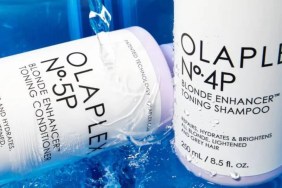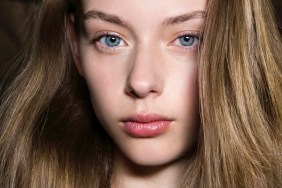I discovered it in the natural medicine store of a sleepy colonial town, and the (witch) doctor on duty told me that if I applied it regularly, it would strengthen the hair strands, stimulate hair growth, cure dandruff and prevent balding (luckily, a problem I don’t worry about). The directions on the bottle said to apply it at night, but as he joked, “It’ll make your hair look so nice, why waste it at night! Use it in the morning before you go out!” Hair-obsessed as I am, I snapped up a bottle for an un-haggled-for $3. At home I’ve found that the oil, which actually has a pleasant almond scent, works wonders as a deep conditioner and shine enhancer—although I’ve yet to gain Rapunzel-like locks.
Not only did my encounter with Central America’s best-kept beauty secret make me question when I can expect to see sapuyulo oil advertised as the next fad exotic ingredient in drugstore shampoo, it made me wonder what other hair secrets the world has been hiding from me…
Japan and China: Camelia Oil
Asian beauties have long known the benefits of camellia oil for hair. With a wealth of necessary vitamins like A, B, C and E and an enticing herbal aroma, the oil—called tsubaki in Japan and “tea seed oil” in China—also contains the same essential fatty acids that olive oil is known for. Great as a scalp conditioner and healthy hair growth promoter, some believe the oil can also put color back into gray hair. Japanese beauty brand Shiseido even uses it as the secret ingredient in its mascara.
West Africa: Black Soap
In the Western world, we tend to think soap as necessarily being pure and white—but you’ll reconsider this after one wash with African black soap. Mostly exported into the U.S. from Ghana but used all over West Africa, the lumpy brown soap is made from coconut and palm oils, cocoa pod and the ashes of cocoa pods and plantain skins (the reason for it’s dark color). This powerful (and natural) cleanser leaves skin smooth but also works well as a clarifying shampoo that won’t strip or over-dry your hair.
India: Amla Oil
You can think of amla oil as the wisdom of the ancients—this oil derived from the gooseberry plant has been a mainstay of ayurvedic medicine for centuries. With a strong musky scent and dark in color, this oil is perfect for raven-haired beauties. The faithful proclaim that antioxidant-rich amla oil helps prevent thinning and graying hair.

Egypt: Henna
The beauty salons in ancient Egypt were using henna to dye their customer’s hair a rich red color millennia ago. The famous product is made from a flowering plant and is used today all over the Middle East and India for tinting hair and even beards. Embraced by the West in the 1800s when a vogue for Orientalism swept through Europe, henna was later popularized in America by redhead Lucille Ball. Henna is widely available at natural food stores, but many don’t know that besides dying the hair, it also has the power to penetrate dull and damaged hair, leaving each strand thick and shiny.
Morocco: Argan Oil
Ok, so maybe this beauty secret wasn’t very well kept… argan oil is swiftly becoming the must-have ingredient—while there were only 2 haircare products with argan oil on the U.S. market in 2007, there were over 100 in 2011. It seems we’ve finally caught on to what Moroccan women have known for years—that the oil, made from the kernels of the argan tree (which only grows in Morocco), is an excellent moisturizer for hair. Mostly produced by women’s collectives, the U.S. demand for argan oil has had a huge socio-economic impact in Morocco—just be sure that the argan oil you buy is pure, and produced fairly and sustainably.

Hawaii: Awapuhi
Awapuhi, a type of Hawaiian ginger, is an all-purpose plant used to cure everything from toothaches to parasites. Mature flowers produce a slimy juice similar to aloe vera gel, which Hawaiian women have traditionally squeezed out and used to add softness and shine to their hair, giving the plant its alias, the “shampoo ginger.” Embraced in the lower 48 by Paul Mitchell, the hydrating juice is touted to have benefits similar to a keratin treatment.
Native American: Yucca
Native American tribes of the southwest use the leaves of the yucca, a widely-found plant also known as soapweed, as a cure-all for hair and skin problems like dandruff, hair loss and psoriasis. A sudsy shampoo can be made by grinding the root into a powder—there are even YouTube videos showing you how to make your own.
Photos: Wikimedia Commons







